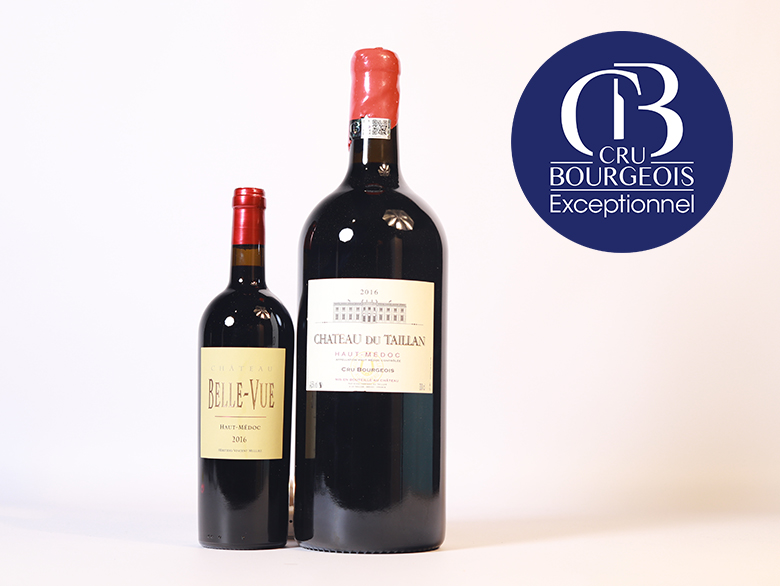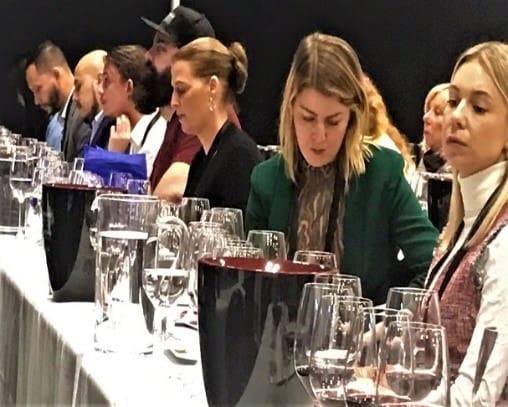
Making Wine Buying Easier? Les Crus Bourgeois du Medoc
You’re not the only one who finds the process of buying a couple bottles of wine for a meal or a gift complicated when you enter a store. I’ve come to the opinion that the wine industry’s retail sector is stuck in the past. There seems to be a strong conviction that wine shops and the wine departments of supermarkets currently provide the best shopping experience – ever – and that it would be sacrilegious to change how consumers purchase wine.
Paralysis
While wine retailers hang on to the past, winemakers are looking for pathways that will enable consumers to buy more wines. Wine marketing researchers have determined that Consumer Paralysis happens because wine shoppers are confronted with a wealth of options – perhaps too many choice. In addition, there is a lack of consistency from country to country on how wines are named and classified. Importing and distribution impacts on the types of wines available in local wine shops and restaurants. Brands and varieties in one shop or bar may not be available across venues because of limited channels of distribution or other marketing strategies. Even wine labels are not consumer friendly as they are written to satisfy government requirements and may not include information that is helpful to consumers.
Fragments
The wine industry is more fragmented than any other consumer product. In 2019, the US consumed 370 million cases of wine, at 12 bottles a case, that adds up to approximately 4.4 billion bottles of wine in one year. Approximately half of the US wine market is dominated by three-billion-dollar conglomerates including E&J Gallo (i.e., Manischewitz, Taylor, Clos du Bois, Etancia, and Barefoot), Constellation Brands (i.e., Woodbridge, Robert Mondavi, Simi, and Lingua Franca), and the Wine Group (i.e., Almaden, 13 Celsious, and Benziger). These corporations produce, ship, and distribute thousands of bottles of wine each year around the world and many are produced the same way Coca Cola is fashioned – to taste the same year after year and available in huge quantities.
The other half of the wine market is composed of thousands of tiny to medium sized producers and can be reviewed as the difference between agri-business farming and farmers markets.
Taste
Perhaps the best way to understand wine is to drink lots of it and take the time to taste the differences.
French Try to Bridge the Gap
For centuries, the French wine industry has been trying to find ways to sell more wine. They meet with each other, coordinate with each other, cooperate with each other as well as compete with each other – in order to try to simplify the complexities inherent to the wine industry. When their marketing schemes are successful, people buy more of their wines – making everyone happy.
A group of winemakers that have been trying to push away the cobwebs that linger over aging wine barrels and simplify the wine buying experience are known as Les Crus Bourgeois Du Medoc. Not every winery is permitted to be a member or even be considered for membership.
Criteria includes:
- Location. The wineries permitted to even think about joining this group must be from the following AOCs:
- Medoc
- Haut Medoc
- Listrac-Medoc
- Moulis-en-Medoc
- Margaux
- Saint Julien
- Pauillac et Saint Estephe
- Haut Medoc
- Medoc
- Judgement. The wineries are judged on:
- The quality of the wine determined by blind tasting and consistency
- Traceability and authentication for each vintage
- Tasting checks – before bottling over a five-year period of the Classification (at least two checks per property)
- Environmentally friendly to the point of obtaining certification in environmental and sustainable growing practices.
The 6-person judgement team is also concerned with promotions, quality of reception for professional visitors and the general public at the winery, channels of distribution plus domestic and international marketing efforts.
- Stickers
All bottles of Crus Bourgeois du Medoc carry a unique secure visual recognition system embedded in a sticker. It is offered as a guarantee of quality, security and authenticity.
Currently, more than 25 percent of all the wine produced, bottled and sold from the Medoc is classified as Cru Bourgeois and includes 4100 hectares of vines, producing over 29 million bottles of Bordeaux wines each year
The Wines Les Crus Bourgeois

At a recent event held in Manhattan, I had the good fortune to explore a few of the wines that are classified as Crus Bourgeois du Medoc.
My Favorites
- Chateau Patache d’Aux (2018). Appellation: Medoc; Terroir: Limestone with clay and clay-limestone; Varieties: 67 percent Merlot, 30 percent Cabernet Sauvignon, 3 percent Cabernet Franc, 2 percent Petit Verdot; Average age of vines. 40 years; Aged 10-14 months; 80 percent in barrels (1/3 new), 20 percent in concrete vats.
The Chateau is situated in Begadan (northern Medoc) and 58 hectares of vineyards are spread through Begadan and Saint-Christoly du Medoc. The Chateau is located 10 kilometers from the Gironde estuary and 30 kilometers from the Atlantic Ocean.
The first owners of the Chateau were descendants of the Count of Armagnac, the Chevaliers d’Aux and the family can be traced back to 1632. The property was seized during the revolution and changed into a stage coach post – known as Pataches. The wines were cru bourgeois in 1932.
Notes:
To the eye, deep purple hues suggest a depth of taste, while the nose finds fruit of black cherries and spice alongside the minerality of wet rocks. The palate is entertained with supple blended tannins enhanced by oak leading to an elegant and bright finish.
- Chateau De Malleret (2018). Appellation: Haut-Medoc; Terroir: Gunz Gravels; Varieties: 83.5 percent Merlot, 16.5 percent Cabernet Sauvignon; Ageing: Temperature controlled steel tanks for 3-4 weeks before the wine is racked into barrels for 12 months (1/3 new). The grapes are grown in three 20-hectare plots of vines in the Haut-Medoc and are 25-30 years of age.
The Chateau de Malleret has its roots in the 17th century. Pierre de Malleret was knighted for his distinguished service to King Louis XIV. The property was sold to Philiipe Frederic Clossman and his family continues to be engaged in management of the vineyard.
Notes:
Dark purple in the glass, the nose discovers black cherries and toasted oak. The palate experience features dark black fruit alongside toasty vanilla side-by-side with a sense earthiness. The finish is soft, fruity and elegant. Open well in advance of drinking as it opens beautifully over time.
- Chateau Cap Leon Veyrin (2018). Appellation: Listrac-Medoc; Terroir: Clay-Limestone; Varieties: 58 percent Merlot, 39 percent Cabernet Sauvignon, 3 percent Petit Verdot; Average age of vines: 30 years; Ageing: 12 months in barrels (60 percent new).
The Chateau Cap Leon Veyrin has been in the same family beginning in the early 19th century when the original estates, Chateau Cap Leon and Veyrin were merged. The name is derived from its location, at the highest point or “head” of Listrac Medoc giving the vineyard natural drainage and sun. The estate is managed by the sixth generation in the family, Nathalie and Julien Meyre.
Notes:
The eye is delighted with the darkness of ripe red cherries, while blackberries and ripe dark cherries deliver a delicious aroma to the nose heightened by the smell of wet rocks and dark moist soil. The palate finds silky, persistent tannins that add a backstory to the dark cherries that dominate the taste experience. Well-structured with concentrated fruits, it is expected that this wine will age well.
The Vinexpo Event




This is a series focusing on Bordeaux wine.
Read Part 1 Here: Bordeaux Wines: Started with Slavery
Read Part 2 Here: Bordeaux Wine: Pivot from People to the Soil
Read Part 3 Here: Bordeaux and Its Wines Change… Slowly
Read Part 4 Here: Governance and Associations of Bordeaux Wineries: By Law and By Choice
© Dr. Elinor Garely. This copyright article, including photos, may not be reproduced without written permission from the author.
